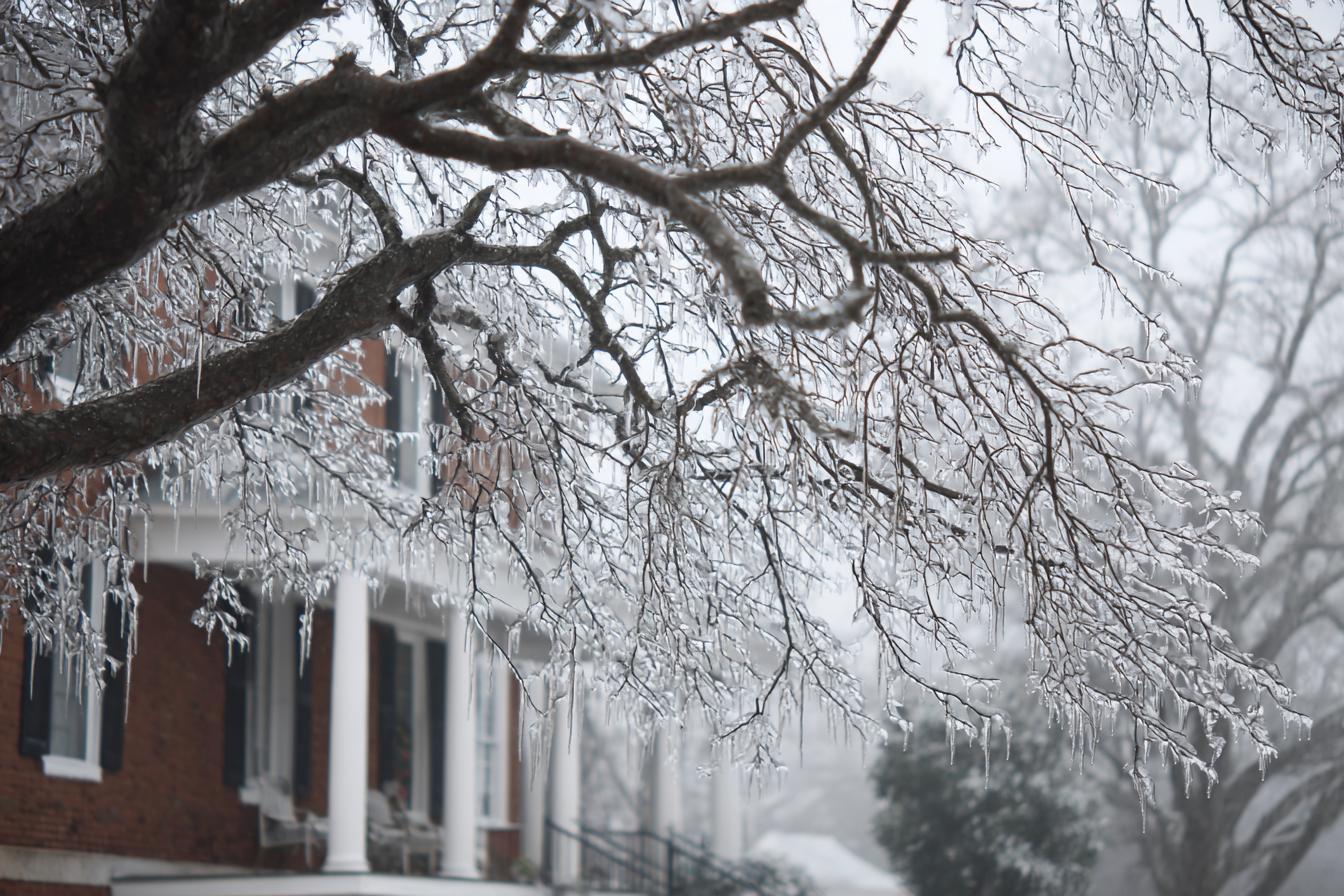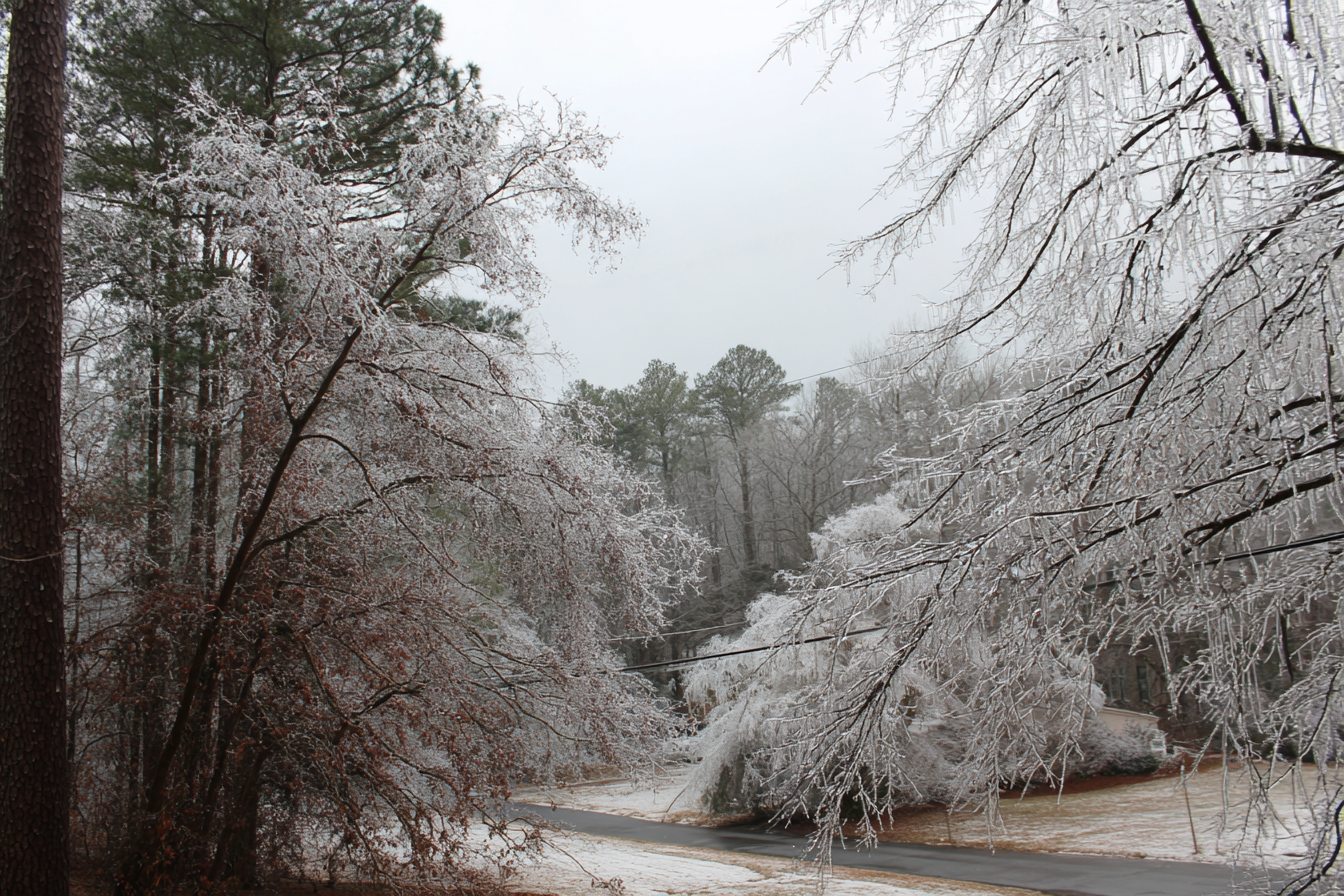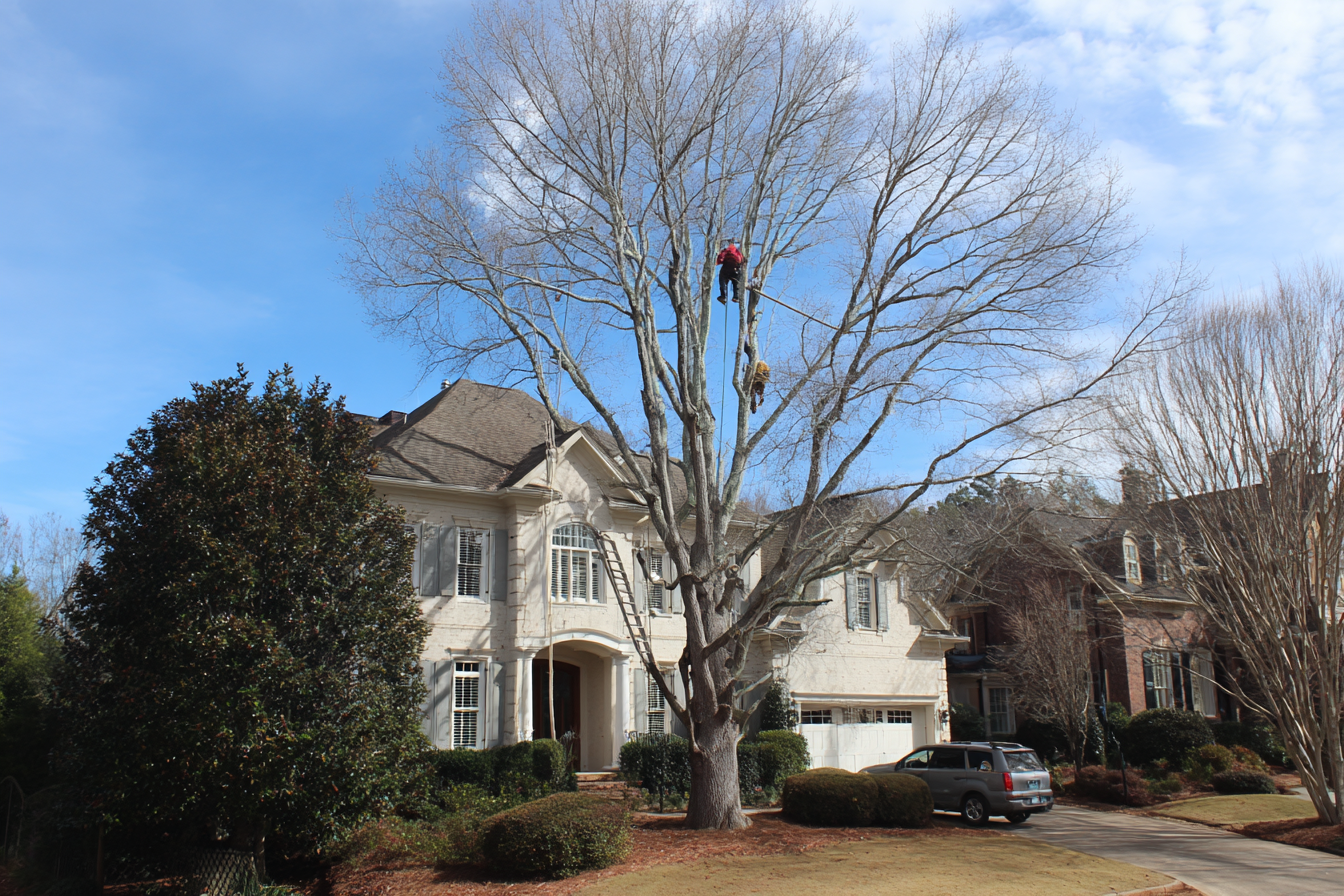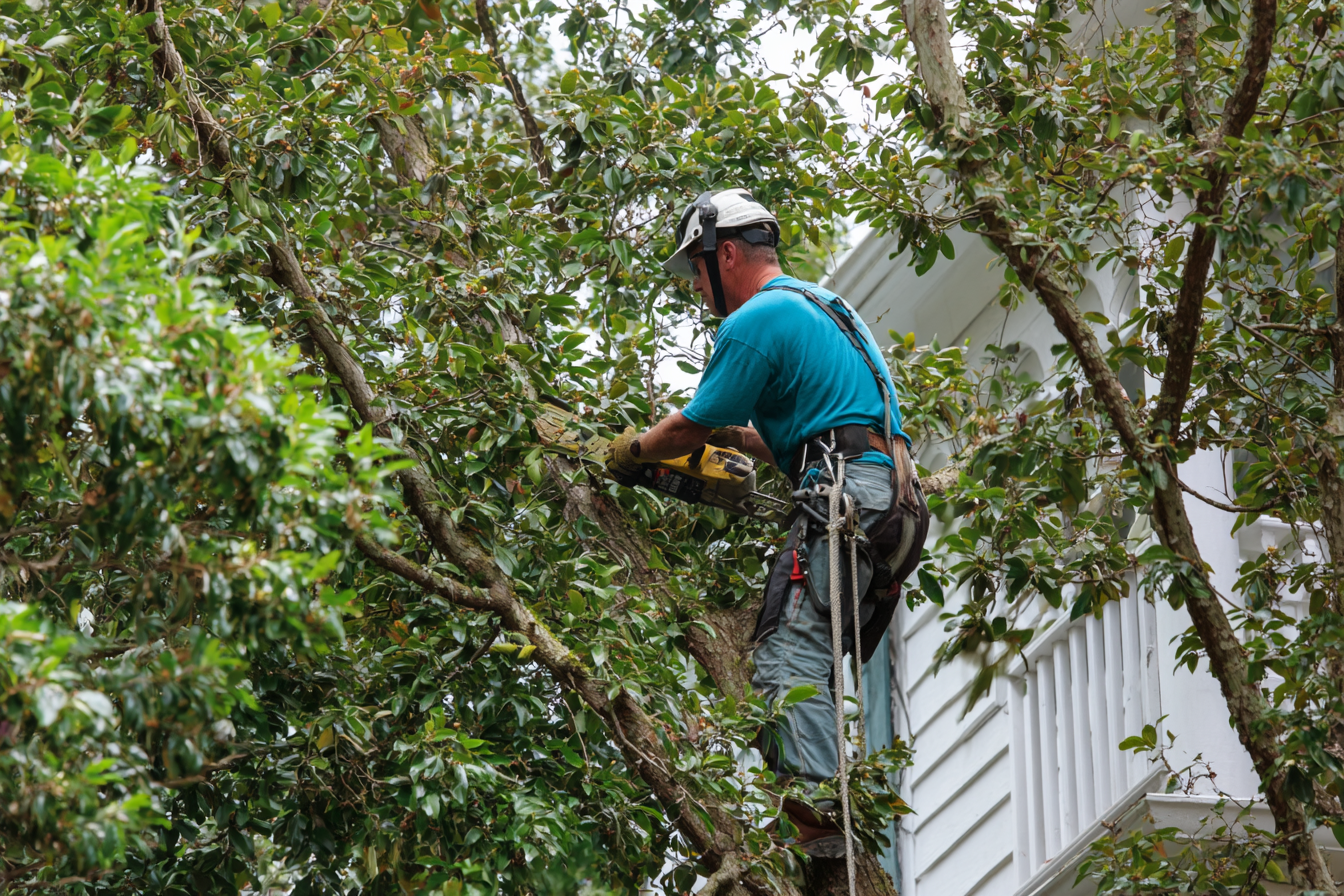
In the quiet aftermath of a freezing rain event, a beautiful but deadly transformation can occur on your property. The world is encased in a shimmering, crystal-like layer of ice. While the sight might be stunning, it's a silent alarm for the trees on your property. The very same ice that glitters in the winter sun is forming what arborists call an "ice dam," a massive, heavy coating of ice that clings to branches and limbs. This seemingly harmless layer of ice is, in fact, an incredible force of nature, one that can push even the strongest trees to their breaking point. Understanding the anatomy of an ice dam and the immense stress it places on a tree is the first step toward protecting your property and family. This isn't just about a few broken branches; it's about the very real and immediate danger of a catastrophic tree failure.
What Exactly Is an Ice Dam on a Tree?
An ice dam on a tree is not just a light dusting of frost. It's a thick, often solid, layer of frozen water that completely envelops branches, twigs, and even the main trunk. This phenomenon occurs when freezing rain or sleet falls and accumulates on the tree's surface. Unlike snow, which is porous and relatively lightweight, ice is dense and incredibly heavy. For every inch of diameter, a tree branch can be supporting an immense amount of weight. This weight doesn’t just sit on the branch; it becomes an integrated part of the tree's structure, pulling down with the full force of gravity. The dam grows with every passing minute of freezing precipitation, becoming a ticking time bomb.
The formation is particularly treacherous because it's so uniform. The ice clings to every exposed surface, multiplying the weight with every small limb. This creates an imbalance that can quickly exceed a tree's natural capacity to flex and hold. The ice essentially acts as a weight-training regimen for the tree, but one that is far too intense and can lead to a spectacular failure.
How Does an Ice Dam Form on Tree Branches?
The formation of an ice dam is a straightforward but powerful process rooted in meteorology. It begins with a specific type of winter storm: freezing rain. This occurs when a layer of warm air sits above a layer of sub-freezing air near the ground. Snowflakes melt as they fall through the warm air, becoming raindrops. These raindrops then fall into the cold air near the ground, where they become supercooled, meaning they are still liquid but their temperature is below freezing. The moment these supercooled raindrops touch a surface that is at or below freezing, they instantly turn into a solid layer of ice.
This process is a continuous loop. As more rain falls and instantly freezes, the ice layer thickens. The dam can also form from a rapid freeze after a period of thawing snow, creating a heavy, solid mass of ice. The key is the density. Ice is significantly heavier than snow. A cubic foot of fresh snow weighs about 5 to 15 pounds, while a cubic foot of solid ice weighs a staggering 57.5 pounds. Imagine that weight distributed across hundreds of feet of branches. The cumulative effect is what makes the ice dam so dangerous.

Why Is the Weight of an Ice Dam So Dangerous?
The sheer weight of an ice dam is the primary reason it's so destructive. Think of it this way: a single two-inch diameter branch, 10 feet long, can hold an additional 100 pounds or more of ice. Now, multiply that across an entire mature tree with hundreds of branches. The total weight can easily exceed several tons. This immense, and often rapidly increasing, load is far more than most tree structures are designed to handle.
This weight creates a variety of dangerous situations. First, it causes branches to bend and sag. This bending puts incredible strain on the wood fibers, which can cause them to snap suddenly and without warning. Second, the weight can cause the entire tree to become unstable. The heavy, asymmetrical load can cause the root system to become compromised or the main trunk to split. This is especially true for trees with weak spots, such as co-dominant stems or internal decay. The weight exploits every vulnerability. The risk isn't just to the tree itself, but to everything underneath it.
What Is the Effect of Ice Dams on Tree Health and Structure?
An ice dam doesn't just cause immediate damage; it can have lasting consequences for a tree's health and structural integrity. The most visible and immediate effect is branch breakage. As the ice dam weighs down on a limb, the wood can crack and snap. These breaks are often clean and sudden, leaving behind a jagged wound that is susceptible to disease and insect infestation. The larger the limb, the greater the danger.
Beyond the visible breaks, the stress of an ice dam can cause internal damage. A tree might look intact, but the weight could have caused internal fibers to shear or crack. This internal damage compromises the tree's structural integrity, making it more susceptible to failure during future storms or even on a calm day. The damage can also cause a tree to become lopsided, affecting its ability to grow and photosynthesize properly. In the long term, a tree that has survived an ice storm might be weakened and its lifespan shortened. The tree might appear to be recovering, but the damage remains, creating a high-risk situation that you may not even be aware of until it's too late.
When Should I Be Most Concerned About an Ice Dam on a Tree?
While any tree with an ice dam is a cause for concern, some situations are far more dangerous than others. The level of risk escalates dramatically when a tree is:
- Near a structure: A tree overhanging your home, garage, or any other building is an immediate threat. A falling limb could cause thousands of dollars in damage or lead to a roof collapse.
- Close to power lines: An ice-laden branch can snap and fall onto power lines, causing power outages for you and your neighbors, or worse, creating a fire hazard.
- Over a public area: If the tree is over a driveway, walkway, or children's play area, the risk to human safety is at its highest. A seemingly minor storm can lead to a serious injury.
- A "High-Risk" Species: Some trees, like Leyland cypress, Bradford pears, and certain oaks, have a branch structure that is more prone to failure under heavy weight. Understanding the species of tree on your property is a key factor in assessing risk.
- Showing Signs of Pre-Existing Damage: A tree that already has a weak point, like a large crack, a cavity from decay, or a co-dominant stem, is significantly more likely to fail under the stress of an ice dam. The ice simply acts as the final straw.
What Is the Safest Way to Deal with an Ice-Laden Tree?
When you see an ice dam on your tree, your first instinct might be to try and remove the ice yourself. This is a very dangerous mistake. Hitting the branches with a broom or stick is not only ineffective but can also cause a sudden release of the branch, leading to severe injury. The branch could snap back or fall on you. The immense weight and tension in the branches make this a job for a professional.
The safest and only recommended course of action is to stay away from the tree and call a professional arborist. A qualified tree service has the right equipment and training to assess the situation from a distance and determine the best course of action. They can safely remove or prune the damaged parts of the tree, alleviating the stress and reducing the risk of further damage. They can also assess the tree for long-term health and structural issues that may have resulted from the storm.

What Is the Safest Way to Deal with an Ice-Laden Tree?
Conclusion
An ice dam on a tree is a clear and present danger that should never be underestimated. What looks like a winter wonderland is actually a delicate and perilous situation that can turn deadly in a moment. The sheer weight of the ice, combined with the forces of gravity, can push even the strongest trees to their limit, leading to catastrophic failure. Protecting your property and loved ones starts with understanding this silent threat and taking the right precautions. Never attempt to handle an ice-laden tree on your own. For your safety and peace of mind, trust the experts.
If your trees are weighed down by ice or have already sustained damage from a recent storm, don't wait for a disaster to happen. Contact Georgia Pro Tree Services today. Our team of certified arborists has the expertise and equipment to safely assess, prune, and remove ice-damaged trees, ensuring the safety of your home and property. Don't take a chance with ice; call us now to schedule a professional evaluation and protect what matters most.
Ice Dams on Trees FAQs
Q: Can I remove ice from my tree branches myself?
A: No, it is extremely dangerous to attempt to remove ice from tree branches on your own. The ice adds immense weight and tension to the branches, and attempting to knock it off with a broom, shovel, or any other tool can cause the branch to snap and fall unexpectedly, leading to serious injury or death. The safest course of action is to stay away from the tree and contact a professional arborist to assess the situation. They have the training and specialized equipment to handle these hazardous conditions safely.
Q: How can I tell if a tree is at risk of falling due to an ice dam?
A: There are several signs to look for that indicate a tree is at high risk. The most obvious sign is a significant amount of visible sagging or bending in the branches. Look for cracks or splits forming in the branches or trunk. You may also notice the tree leaning more than usual. A large, asymmetrical ice load can also be a red flag. If the ice dam is particularly heavy and covers a large portion of the tree, it is a significant concern. In any of these cases, it is best to contact a professional for an expert opinion.
Q: Do all trees react the same to an ice storm?
A: No, different tree species have varying levels of resistance to ice storms. Trees with strong, flexible wood and a more upright branch structure (like certain maples and oaks) tend to fare better. On the other hand, trees with weak or brittle wood, or those with a broad, flat crown (like Bradford pears, willows, and some Leyland cypress) are more susceptible to damage. Additionally, the health of the individual tree plays a major role; a tree with pre-existing decay, a shallow root system, or previous storm damage is far more vulnerable.
Q: What should I do if a tree has already fallen due to ice?
A: If a tree has fallen on your property, a car, or a structure, the first priority is safety. Make sure that no one is in immediate danger and that there are no downed power lines. Do not approach the tree or attempt to move it yourself, as there may be tension and parts of the tree could shift. Once you have secured the area and ensured everyone is safe, contact a professional tree service immediately. They can safely remove the tree and assess any potential damage to your property.
Q: How can I prevent future ice damage to my trees?
A: While you cannot prevent an ice storm, you can significantly reduce the risk of damage to your trees. The best preventative measure is proactive tree care, which includes regular professional pruning. A certified arborist can identify and remove weak, dead, or diseased branches before a storm hits, improving the tree's overall structural integrity. Proper pruning can also help create a more stable and balanced crown, making the tree less susceptible to the effects of heavy ice and wind.

We're your local tree pros!
Georgia Pro Tree Services takes the highest quality of care when servicing your trees. Call us to find out how we can help you keep your yard in top shape.



